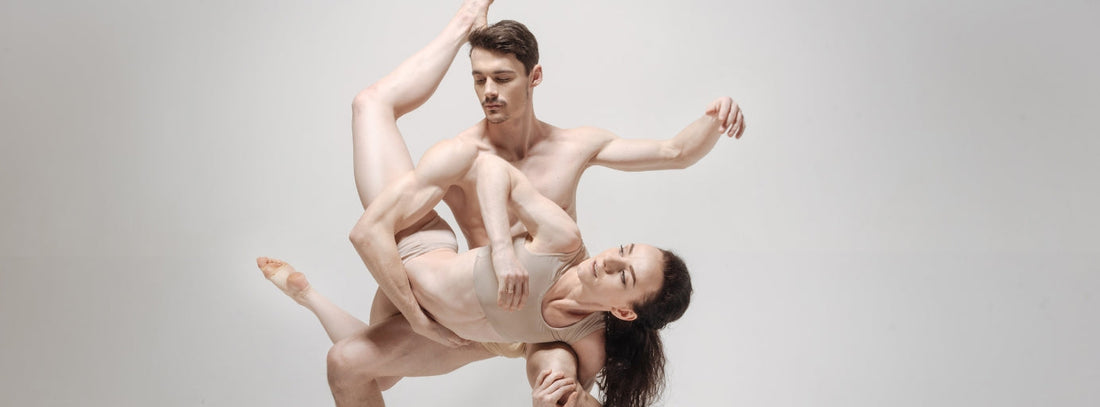In partner dancing, the role of the leader is not limited to performing technical figures or leading predefined movements. Creativity is an essential dimension to surprise, enrich the dance and establish a real connection with one's partner.
Here are 10 ways to develop your creativity while maintaining the pleasure and comfort of your partner.
1. Combine known movements in different ways
Creativity isn't always about inventing new tricks; you can start by recombining moves you already know in new ways. Learn to break down the patterns you know into basic moves and play with sequences to create new, unexpected patterns.
Example / Exercise:
- Choose three movements that you know perfectly.
- Try chaining them together in a different order or by incorporating pauses.
- Add a change of direction between two movements to make the sequence more complex.
2. Work on your inspiration with a constraint
Constraints are a great way to get out of your comfort zone and spark your imagination. By intentionally limiting your possibilities, you will be forced to explore new options.
Example of constraint / Exercise:
- Lead only with your partner's left arm.
- Do not allow yourself to use your right arm or let go of your partner's hands.
- Try to lead a partnerwork without taking basic steps or cross-body's.
These simple constraints will push you to reinvent the way you lead and explore new ideas.
3. Change the rhythm
Music provides a rich framework for experimentation. Playing with rhythm is a creative way to enrich your movements and surprise your partner.
Example / Exercise:
- Slow down a movement or, on the contrary, perform it more quickly, while maintaining your steps.
- Try leading a movement to a different beat (for example, going from a 1-2-3 tempo to a 1-3-5 tempo).
- Alternate between speeding up and slowing down within the same movement to change the energy.
4. Watch videos for inspiration
Videos of experienced dancers are a source of endless ideas, allowing you to observe new techniques and spot moves that you can adapt to your style.
Example / Exercise:
- Watch a dance video and choose a move that catches your eye.
- Reproduce this movement within your current technical capabilities.
- Customize it by changing one detail: direction, timing or amplitude.
5. Start with a concept and explore variations
Taking a simple concept (for example, "arm throw") and breaking it down into several variations can open up many possibilities.
Example / Exercise:
- Take the concept of arm throwing: explore how to guide it by moving forward, backward, or adding rotation.
- Lead while keeping the closed position, explore possible movements and dynamics
- “Mentira”: initiate a movement and change it (direction, orientation, etc.) at the last moment to create a surprise effect.
6. Put yourself in new situations
Changing your position in relation to your partner can disrupt your mechanisms and stimulate your creativity.
Example / Exercise:
- Place your partner behind you and think about what you can lead from this setup.
- Try to lead while staying next to or even back to back with the follower.
7. Try symmetry
Many movements can be adapted into mirror or inversion. Working on symmetry develops your ability to improvise from any possible situation.
Example / Exercise:
- Take a movement that you usually perform on the left and perform it on the right.
- Test a figure that moves forward by moving backwards instead of forwards.
- Adapt each variation to maintain your partner's comfort.
8. Break the usual codes
Modifying classic moves by adding your own twist is a great way to make dance your own.
Example / Exercise:
- Add movement or rotation to a classic figure.
- Transform a simple cross-body lead by incorporating a pause or original styling.
9. Learn to follow
Learning the follower role will allow you to better understand what your partner is feeling and incorporate inspiring moves into your repertoire.
Example / Exercise:
- Attend a few classes as a follower.
- Invite experienced dancers to lead you in the parties to discover their style.
- Take note of any movements or transitions that stand out to you.
10. React to what the follower suggests
Couple dancing is a conversation. By being attentive to the follower's suggestions, you can enrich the dance and get out of a one-way leader/follower relationship.
Example / Exercise:
- Give your partner space to suggest moves or variations.
- Incorporate his/her suggestions into your dance and build on it.
- Work on your listening to better understand your partner's intentions.
Conclusion: practicing creativity while respecting the comfort of dance
Developing your creativity is essential to enriching your dancing, but it should never be at the expense of your partner's comfort. Here are some tips for balanced learning:
- Practice your ideas in the studio or during training sessions, rather than in the parties where comfort is paramount.
- Find spaces that are convenient to experimentation, such as casual parties or training session.
- Ask your partners for feedback to adjust your movements and ensure they flow.
- Never force a movement or idea if it doesn't work. Creativity should enrich the dance, not complicate it.
With practice and a caring approach, you will develop a unique creativity that will make your dances unforgettable. So, let your imagination run wild and dare to think outside the box!

